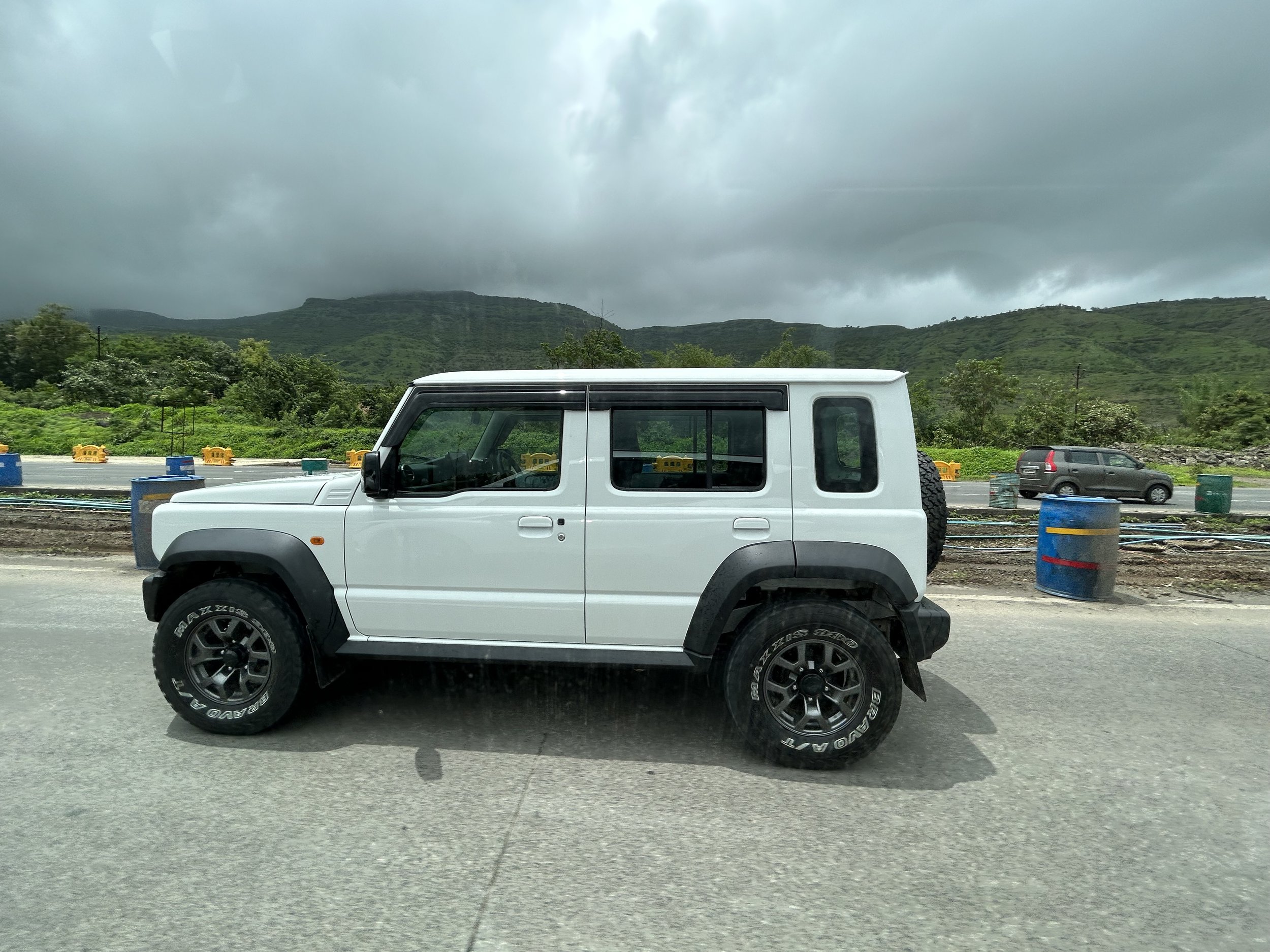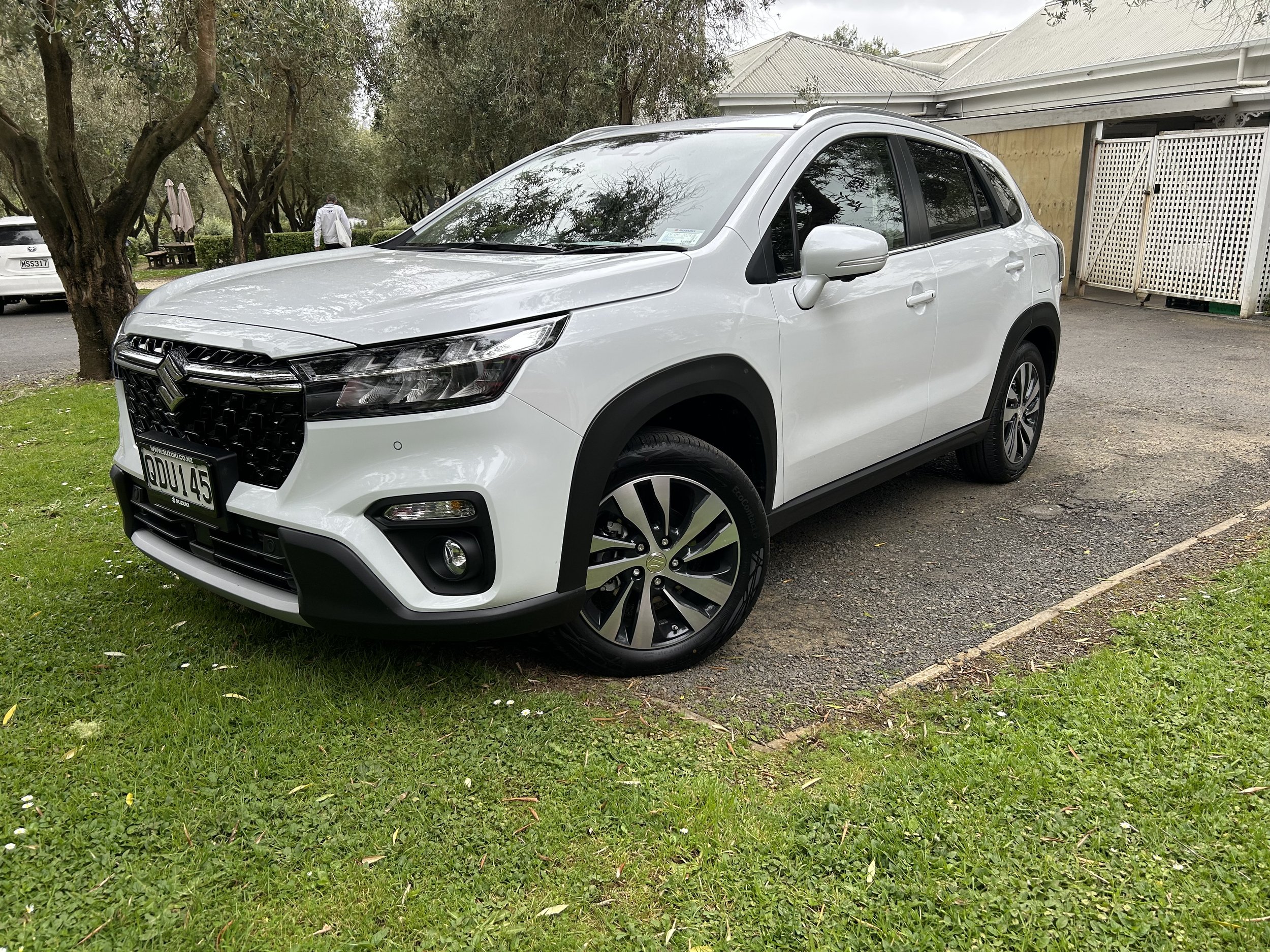Hybrid focus might hit new Swift, misses five-door Jimny
/Suzuki NZ says electric-assist engines are the only solution to avoiding rising CO2 penalties set to remain even if Clean Car Discount goes.
POTENTIAL exists for Suzuki’s best-selling Swift to bring a petrol-electric drivetrain in a new generation (above) landing in mid-2024.
However another favourite - the Jimny - is less likely to avail likewise, regardless the five-door version (below) now confirmed for New Zealand is getting that emissions reducing feature in its primary market.
This from from Gary Collins, general manager of marketing for Suzuki New Zealand.
The Whanganui-based franchise is keen for more of its products to adopt electric-assisted drivetrains because their enhanced efficiency is treated more leniently by the Clean Car Standard.
CCS is a CO2 reduction legislation, which distributors must cope with, that implemented on January 1 and is separate to the Clean Car Discount car buyers have copped for the past two years.
Whereas CCD will be abolished - probably by December 31 - if National takes power as result of this weekend’s general election, CCS is set to remain.
Suzuki reckons passenger fare falling short of annually diminishing CO2 targets will be penalised thousands of dollars, costs that will pass on to consumers.
CCS will pain even for this specialist in compact, light and small-engined cars if it maintains pure petrol engines, no matter how thrifty they are, as everything comes down to improving CO2 count.
That’s where hybrids are better and why a new version of the S-Cross was subject of a press conference today, where it was confirmed three 1.4-litre front-drive facelift types of this long-lived compact crossover released last year are all going.
Those $37,500, $37,990 and $40,500 versions have been bumped by a front drive $42,990 and $45,990 all-wheel-drive (below) editions with the same look, but changed spec and the same 1.4-litre petrol-electric the Vitara transferred to earlier this year.
Which means? less power - 103kW down to 95kW - but more torque (235Nm incoming, 220Nm before) better economy - having made 6.9 litres per 100km, it’s now good for 5.5-5.9L/100km - and lower emissions: 124-135g/km, from 142g/km.
So what about the two impending entrants? Five-door Jimny is here in February, the next-generation Swift hatchback around mid-2024.
An electric-assist 1.5-litre will offer in Jimny next year, but bad news - it’s only going to be availed only in India, where this model is built, Collins says.
“It’s not for export. We have no advice about hybrid combinations for this (car) at this stage.”
So we’ll see instead see it with the familiar, hard-working normally-aspirated 1.5, he says, in the same 77kW/134Nm tune that avails in the three-door Jimny, that comes out of Japan and has been here for more than two years. That engine emits 147g/km so will cop CCS focus.
As for Swift? Signs look positive. A design study of a brand-new generation will be fully unveiled at the Tokyo mobility show, opening on October 26, but Suzuki has already shared the photos here today, along with a brief statement. The images appear to show a Hybrid badge on the show car’s boot lid.
While official technical detail is scarce, the brand’s release says “a shift from tangible consumption to experiential consumption” can be expected from the new car and a “high-efficiency engine strikes a balance between driving performance and fuel efficiency.”
Media reports from Japan claim the three engine choices that prevail in the current car - a 1.0-litre turbo, a 1.4-litre turbo and a 1.2-litre non-turbo – could be usurped by a single hybrid option of unknown capacity.
Collins says at present only the Swift smallest capacity unit cops a CCS hit - and it’s a modest penalty. So if they continue, that’s okay.
But if Swift were to go hybrid? That would be even better and he hopes to discover more when attending the show and in meeting Suzuki head office high-ups afterward.
“We don’t know if it will be (hybrid) yet … we hope to learn more from the factory after the motor show.”
If the commentators are correct “I think we would be comfortable with that.
“The engines we have now are very efficient. But under Clean Car Standard we will have to continue to make improvements on our emissions. So we’d be quite comfortable if it was. But we just don’t know for sure at the moment.”
Both cars are important. Jimny has been the Whanganui-domicled distributor’s third-strongest selling model over the past 12 months, with 1141 registrations, while Swift has been No.1, with 4362 sold in that period.
The Jimny three-door and five-door are no different in height and width.
Everything is about the extra length. In respect to that, at 3985mm, it is 340mm longer than the three-door and the wheelbase is now 2590mm.
Understandably there’s improvement in rear legroom and boot space – the latter is 110 litres’ larger. The forward part of the cabin is unaltered to that Kiwis are familiar with. The bigger body shell is heavier, adding between 75kg to 125kg, depending on the specification. Suzuki NZ has not gone into that aspect.
It also maintains the AllGrip Four-wheel drive. Strong off-roading ability is promised and while the extra metal work means the five door’s breakover angle is 24 degrees, a four degree reduction on the three-door, the approach and departure angles remain at 36 and 50 degrees respectively.
It will avail for the first quarter solely with a five-speed manual gearbox; only thereafter the four-speed automatic option will also represent.
Collins is okay with that. With three-door Jimny, the auto to manual preference is about 50-50, and he feels it’ll be the same with the larger edition.
With Swift, Suzuki has highlighted improvements to the safety systems including a new twin lens autonomous emergency braking system and auto-dipping high beam technology, and driver attention/fatigue monitoring.
Inside there appears to be a larger touchscreen – now mounted on top of the dashboard – as well as analogue instruments with a small digital screen, automatic air conditioning, and Apple CarPlay and Android Auto connectivity.
The show will also allow Suzuki to display another styling study of its upcoming electric SUV, the eVX, which appears to be bigger than the Suzuki Vitara. The Tokyo car is the second concept sand, unlike the first, has an interior.
In the meantime, Suzuki NZ is still investigating adding the Fronx, which bases off the same platform as the now defunct Baleno compact car, but in a pert SUV shape. It’s also being built in India and also has a mild-hybrid engine, a 1.0-litre with direct fuel injection and electric assistance.
Collins says Suzuki volume for 2023 won’t surpass the 8494 registrations it achieved in 2022, its best ever year here, because of a lapse in sales over the past couple of months, when Clean Car rules tightened up. It doesn’t see any improvement for the remainder of the year. It admits it had a brilliant June as a result of a campaign highlighting that Swift and other cars were losing their rebates after July 1.






















